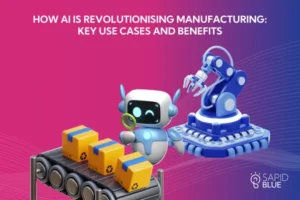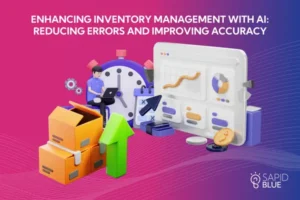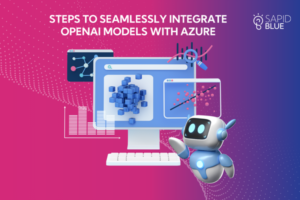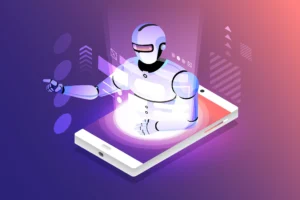Artificial Intelligence (AI) is like a magic wand that’s changing everything around us. To make the most of this digital age, it’s important to understand the basics of AI.
AI means teaching computers to think and learn like humans. You might have seen it in action with virtual assistants like Siri and Alexa, or in self-driving cars. But AI isn’t just about robots; it’s also used in healthcare to help doctors diagnose diseases faster and more accurately.
One key thing to know about AI is machine learning. It’s like teaching a computer to recognize patterns in data and make decisions based on what it learns. Another cool part is natural language processing (NLP), which helps computers understand and talk to us like humans do.
But there are important things to think about with AI, too. Like making sure algorithms are fair and don’t have biases, and keeping our data safe and private.
By learning about AI, whether you’re a student, a business owner, or just curious, you can be part of shaping how it’s used in India. It’s an exciting time to be part of the digital world, and understanding AI is like having a superpower to navigate it better.
1. What is Artificial Intelligence?
Artificial Intelligence (AI) is like giving brains to computers! It’s all about making machines smart enough to think, learn, and even correct themselves like humans do. Imagine your phone understanding you when you speak to it, or cars driving themselves safely on the roads—that’s AI at work!
One important part of AI is machine learning. This is where computers learn from the information they get and improve themselves without being told what to do step by step. It’s like how you get better at a game by playing it more often.
Then there’s natural language processing (NLP), which helps computers understand and talk like humans. Have you ever chatted with a virtual assistant like Siri or Google Assistant? That’s NLP in action!
AI also involves things like computer vision, which helps machines see and understand images, and robotics, where AI controls robots to do tasks like building cars or exploring unknown places.
AI is already making a big impact in many areas, from healthcare to entertainment. But it also brings up questions about privacy and fairness that we need to think about as we use it more and more
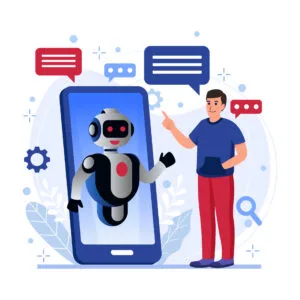
2. The Evolution of AI :
The story of AI’s journey is like a Bollywood blockbuster, starting with a humble beginning and now ruling the screens everywhere. Back in the 20th century, when our grandparents were rocking to classic tunes, some brilliant minds were busy dreaming up AI. Initially, it was all about setting up rules for computers to follow, like teaching a toddler the dos and don’ts. But it was a struggle; AI couldn’t handle the real world too well.
Then came a game-changer: machine learning. Imagine if your phone could learn from your habits without you having to tell it every single thing. That’s exactly what happened with AI. Suddenly, it could analyse loads of data, find patterns, and make smart decisions on its own. Think of it as your favourite cricket player learning new shots by watching videos.
And then, there’s deep learning, the real hero of the story. It’s like those superhero movies where the hero discovers new powers. Deep learning models, inspired by how our brains work, can do amazing stuff like understanding what you say, translating languages on the fly, and even beating humans at chess!
Today, AI is not just a sci-fi dream; it’s all around us. From helping you find the perfect song to predicting what you might want to buy next, AI is like your personal genie, making life easier and more fun. And who knows what’s next? With brilliant minds always at work, the future of AI in India and beyond looks brighter than ever!
3. Key Components of AI :
Artificial Intelligence (AI) is like a toolbox filled with different tools, each serving a unique purpose to make technology smarter and more helpful. Here are some key tools:
a) Machine Learning (ML)
Machine Learning is the heart of many AI systems and applications. It involves algorithms that enable computers to learn from and make decisions based on data. Here’s a more detailed look:
- Supervised Learning: This is like teaching a child with examples. You provide the machine learning model with data that is labeled, meaning that the answer (or outcome) for each piece of data is provided. The model learns from this data and can then make predictions on new, unseen data. For example, after showing thousands of pictures of cats and dogs, the model can differentiate between them.
- Unsupervised Learning: In this case, the data is not labeled. The model tries to find patterns and relationships in the data on its own. It’s like giving a child a bunch of toys and letting them group the toys into categories without telling them what those categories should be.
- Reinforcement Learning: This is learning by trial and error, where the model makes decisions in an environment to achieve a goal. It receives feedback in the form of rewards or penalties and learns over time to make better decisions. It’s akin to teaching a pet tricks by rewarding them for correct actions.
b) Natural Language Processing (NLP)
NLP allows computers to read, understand, and generate human language. This involves several sub-tasks:
- Syntax and Semantics Analysis: Understanding the grammar and meaning of sentences. Syntax refers to the structure of sentences, while semantics refers to the meaning.
- Sentiment Analysis: Determining the sentiment behind a piece of text, whether it’s positive, negative, or neutral. This is widely used in analyzing customer feedback or social media posts.
- Language Translation: Translating text from one language to another. Advanced NLP models can now provide translations that are remarkably close to those made by human translators.
c) Computer Vision
Computer vision gives machines the ability to “see” and interpret the visual world. This involves tasks like:
- Image Recognition: Identifying objects, people, scenes, etc., in images. For instance, recognizing a friend in a photo.
- Object Detection: Not just recognizing what objects are in an image but also determining their locations and sizes.
- Image Generation: Creating new images based on certain specifications or even generating realistic human faces that don’t belong to any real person.
d) Robotics
Robotics combines AI with mechanical engineering to create robots capable of performing tasks. This involves:
- Autonomous Vehicles: Cars that can drive themselves by perceiving their environment and making decisions in real time.
- Industrial Robots: Robots that can perform precise tasks in manufacturing, from assembling products to painting them.
- Service Robots: Robots designed to assist humans, whether in customer service, as personal assistants, or even as surgical assistants in hospitals.
4. The Future of AI :
The future of AI in India is a landscape braced for remarkable transformations across several key sectors such as healthcare, education, and business. Let’s delve deeper into how AI is set to reshape these areas, and the considerations that come with its advancement.
a) Healthcare
AI is poised to revolutionize the healthcare sector in India by enhancing diagnostics and patient care. Through the use of advanced algorithms, AI can analyze complex medical data at unprecedented speeds, identifying patterns that might elude human experts. This capability is particularly promising for early diagnosis of diseases, where AI systems can detect subtle anomalies in imaging data, such as X-rays or MRIs, that might indicate the onset of conditions like cancer or heart disease. Furthermore, robotic surgeries, guided by AI, can perform precise operations with minimal invasiveness, leading to quicker patient recovery times and reduced risk of complications.
b) Education
In the field of education, AI introduces the potential for highly personalized learning experiences. AI tutors can adapt to each student’s learning pace, style, and preferences, offering tailored instruction that can help bridge knowledge gaps more effectively than traditional one-size-fits-all teaching methods. Moreover, AI can alleviate administrative burdens by automating tasks like grading and scheduling, allowing educators to dedicate more time to teaching and student engagement.
c) Business
Businesses stand to gain significantly from AI through enhanced analytics and decision-making capabilities. AI algorithms can sift through vast amounts of data to uncover insights, trends, and patterns that might not be immediately apparent. This can inform strategic decisions, optimize operations, and predict future market movements. Additionally, AI can improve efficiency by automating routine tasks, from customer service inquiries handled by chatbots to inventory management.
d) Ethical Considerations and Challenges
Despite the myriad opportunities AI presents, its advancement raises important ethical concerns. Algorithmic bias is a critical issue, where AI systems may perpetuate or even exacerbate existing prejudices due to biased data or flawed programming. This can lead to unfair treatment or discrimination in areas like hiring practices, loan approvals, and law enforcement.
Job displacement is another significant concern, as AI and automation could render certain job categories obsolete, leading to economic and social challenges. It’s imperative that as AI continues to evolve, measures are taken to re-skill and up-skill the workforce to mitigate these impacts.
e) The Path Forward
To harness AI’s full potential while addressing these challenges, India must focus on responsible AI development. This involves creating AI systems that are transparent, accountable, and inclusive, ensuring they serve the wider good. Policymakers, technologists, and stakeholders across sectors need to collaborate on establishing ethical guidelines, robust regulatory frameworks, and continuous learning initiatives to foster an AI-enabled future that benefits all segments of society.
Conclusion
In conclusion, Artificial Intelligence (AI) is not just an element of the digital age; it’s a transformative force reshaping our world. From the humble beginnings of rule-based systems to the current era dominated by machine learning, deep learning, and other AI technologies, the journey of AI has been nothing short of a revolution. Today, AI’s impact is felt across various sectors, notably in healthcare, education, and business, offering solutions that were once thought to be the realm of science fiction. In healthcare, AI-driven diagnostics and robotic surgeries are setting new standards for patient care. In education, personalized learning experiences crafted by AI are redefining the teaching and learning process. Meanwhile, in the business sector, AI-powered analytics and automation are revolutionizing decision-making and operational efficiencies.
FAQs
1. What is Artificial Intelligence?
Artificial Intelligence (AI) refers to the development of computer systems that can perform tasks typically requiring human intelligence. This includes understanding natural language, recognizing patterns, learning from experience, and making decisions. Examples include virtual assistants like Siri and Alexa, self-driving cars, and advanced diagnostic tools in healthcare.
2. How has AI evolved over time?
AI has evolved significantly from simple rule-based systems to advanced machine learning and deep learning techniques. Initially, AI relied on pre-defined rules to perform tasks. The introduction of machine learning allowed AI systems to learn from data. Deep learning, inspired by the human brain, has further advanced AI’s capabilities, enabling sophisticated tasks like natural language understanding and complex pattern recognition.
3. How is AI used in healthcare?
AI enhances healthcare by improving diagnostics and patient care. It can analyze complex medical data quickly and accurately, identify early signs of diseases, and assist in robotic surgeries. AI systems can detect subtle anomalies in medical images, aiding early diagnosis and treatment planning.
4. How does AI impact education?
In education, AI enables personalized learning experiences by adapting to individual student needs and learning styles. AI tutors can provide tailored instruction, helping students learn more effectively. Additionally, AI automates administrative tasks such as grading, allowing educators to focus more on teaching and student interaction.
5. How does AI benefit businesses?
Businesses benefit from AI through enhanced data analytics and decision-making. AI can analyze large datasets to uncover trends and insights, optimize operations, and predict market movements. AI also automates routine tasks, improving efficiency in customer service, inventory management, and more.

